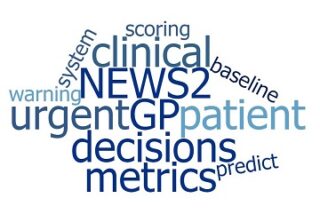Q Exchange
Testing Effectiveness of Early Warning Scores in Primary Care
- Idea
- 2019

What is the challenge your project is going to address and how does it connect to your chosen theme?
There is limited evidence on whether using early warning scores in primary care reduces harm. While the RCGP state that NEWS2 offers a shared language for communicating concern between clinical services, it is not validated for use in primary care. With system-wide staffing and resourcing constraints it is essential that interventions are proven to be effective.
To quantify the potential benefit of adopting an early warning score assessment tool in primary care we need to be able to analyse data on patients most at risk of deterioration as they move across care settings. The analysis needs to consider whether the use of NEWS2 means the sickest patients are more likely to be transferred to secondary care in a timely fashion and are health care professionals communicating better across settings.
We propose using standardised metrics to compare systems where NEWS2 has been embedded in primary care to those where ‘other’ assessment criteria is used.
What does your project aim to achieve?
To evaluate the impact of adopting NEWS2 assessment in primary care settings on the number of emergency admissions and the length of stay for selected cohort. We will use data from primary care GP practises and secondary care to measure the impact of the intervention on patient care. Outcomes assessed will include; number of patients transferred to hospital, proportion of patients with NEWS2 on admission and length of stay.
To promote the use of a NEWS2 primary care tool we will produce a case study to share and promote results across the Q communities and with peers, to ensure that the adoption of NEWS2 in primary care has a positive effect on the patient journey. This will further promote and support future planning and delivery of education in the primary care setting to reduce pressure on the treatment of deteriorating patients in secondary care.
How will the project be delivered?
Our Improvement Advisors will work with a number of GP Practices that have adopted and embedded the use of NEWS2 and compare the outcomes for their patients compared to overall outcomes. To do this we will engage with health care professionals from across primary and secondary care to collect, analyse and evaluate data for the project.
Our Analysts will use the information collected from our analysis and from working with primary care teams, to understand and document how they have embedded NEWS2 and the quantify the main benefits.
Our team will use this information to engage with relevant healthcare providers and commissioners to promote the uptake of NEWS2 assessment in primary care.
What and how is your project going to share learning throughout?
Results of this impact evaluation will be shared across local networks and the Q community to ensure that learning is shared.
This evaluation will give weight to the value of NEWS2 in primary care and its effect on healthcare professionals across the system. It will examine the impact of early assessment and transfer of patients for further care and also patients who may not be appropriate for escalation of care. It will allow for clear guidelines and inclusions in education programmes to ensure early assessment and competence of staff using. Examples of best practise will be summarised as a case study to allow for sharing to a wider audience. This could be expanded to an education/resources pack or e-learning package.
How you can contribute
- What would be the ideal deliverable from this project? What would GPs actually use?
Comments
Elizabeth Bradbury 27 Jun 2019
Building on the +ve impact of NEWS in acute trusts and testing and developing an approach for primary care, underpinned by the robust data analysis described sounds good. The national emphasis on improving the quality of primary care and linking multi-agency system partners to improve the quality of care for places, localities and neighborhoods care adds emphasis.
Working with and through Primary Care Networks who have a remit to reduce variation in care might be an option.
Its clear there is lots to learn from areas who have worked on this already such as those mentioned in other Q comments, so an added bonus to this Q approach is to build connections with and learn form peers even if the bid isn't successful.
Kenny Ajayi 27 Jun 2019
Hi Elizabeth
If an introduction to some of the team at WEAHSN would be helpful, I am happy to do that.
With Goodwill
Kenny
Anna Burhouse 26 Jun 2019
Hi Elizabeth,
have you seen the work of WEAHSN on NEWS? You can find it on their website. They have been building experience in this area for several years now and have collected some great stories from primary care. I think you might find some of their data and reflections on the positives and challenges of this work really relevant for your proposal.
Good luck! 😊
best wishes
Anna
Comments are now closed for this post.